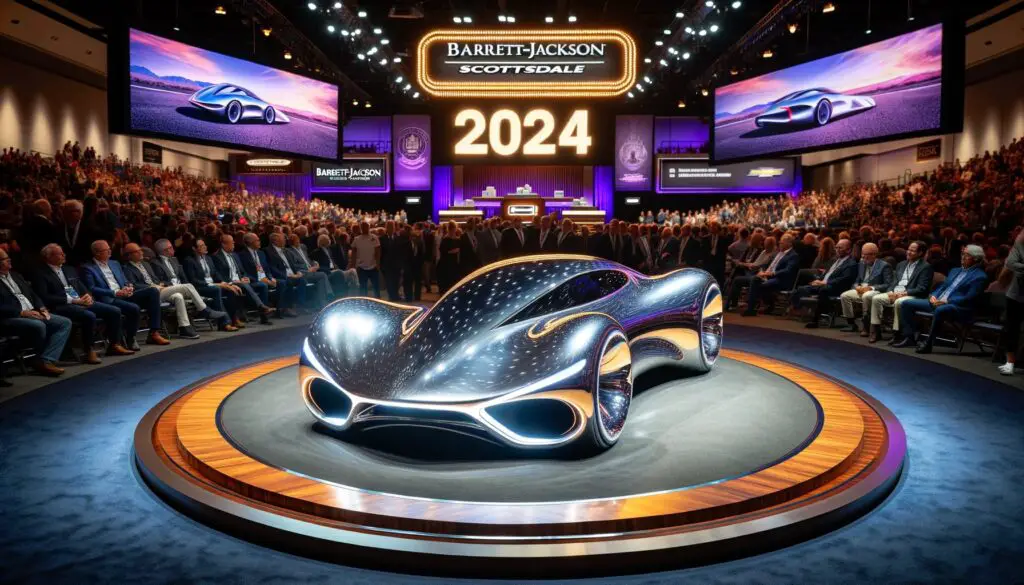I. Introduction
General Motors (GM), one of the world’s largest automakers, recently made a significant shift in its product lineup strategy. This shift was heralded by CEO Mary Barra’s announcement regarding the company’s increased focus on plug-in hybrid electric vehicles (PHEVs). In this article, we will explore GM’s strategic shift, the role of PHEVs, industry trends, environmental considerations, and the impact on consumers.
II. Understanding the Shift
GM’s change in strategy stems from the necessity of meeting stringent federal fuel economy regulations. These regulations are designed to reduce greenhouse gas emissions and promote cleaner transportation options. GM has a history of leadership in plug-in electric vehicles, with the Chevrolet Volt being one of its pioneering models.
Meeting Federal Fuel Economy Regulations: One of the primary reasons behind GM’s strategic shift towards plug-in hybrid electric vehicles (PHEVs) is the imperative need to comply with stringent federal fuel economy regulations in the United States. These regulations, often referred to as Corporate Average Fuel Economy (CAFE) standards, are put in place by government agencies such as the Environmental Protection Agency (EPA) and the National Highway Traffic Safety Administration (NHTSA). The overarching goal of these regulations is to reduce greenhouse gas emissions and promote the adoption of cleaner and more fuel-efficient transportation options.
Greenhouse Gas Emissions Reduction: The federal fuel economy regulations are closely tied to the reduction of greenhouse gas emissions, particularly carbon dioxide (CO2), which is a major contributor to climate change. The transportation sector is a significant source of CO2 emissions, primarily through the combustion of fossil fuels in internal combustion engine vehicles. By raising fuel economy standards, the government aims to mitigate the impact of these emissions and contribute to a cleaner environment.
Pioneering Role with Chevrolet Volt: GM’s history of leadership in plug-in electric vehicles is a significant factor in this strategic shift. The Chevrolet Volt, introduced in 2010, was a groundbreaking PHEV and showcased GM’s early commitment to electrification. The Volt was among the first mass-market PHEVs, offering consumers the ability to drive on electricity for a certain range before switching to a gasoline engine, thus reducing fuel consumption and emissions. While the Volt was eventually discontinued in 2019, it left a lasting legacy and demonstrated GM’s expertise in PHEV technology.
Regulatory Pressure and Market Dynamics: The regulatory environment has evolved over the years, with increasing pressure to reduce emissions and improve fuel efficiency. This, coupled with shifting consumer preferences towards more eco-friendly vehicles, has led GM to reevaluate its product lineup and invest in technologies that align with these changing dynamics. As a result, GM is strategically focusing on PHEVs to not only meet regulatory requirements but also cater to consumer demands for cleaner transportation options.
In essence, GM’s shift towards PHEVs is a response to the dual pressures of stringent federal fuel economy regulations and the growing emphasis on reducing greenhouse gas emissions. Leveraging their history of innovation in plug-in electric vehicles, GM aims to play a pivotal role in the transition towards cleaner and more sustainable transportation solutions while ensuring compliance with regulatory standards.
III. PHEVs Explained
IV. The Role of PHEVs
The Role of PHEVs in Meeting Fuel Economy Regulations:
PHEVs are integral to General Motors’ strategy for complying with stringent federal fuel economy regulations set by government agencies such as the Environmental Protection Agency (EPA) and the National Highway Traffic Safety Administration (NHTSA). These regulations are designed to reduce greenhouse gas emissions and promote cleaner and more fuel-efficient transportation options. Here’s how PHEVs contribute to this effort:
- Higher Fuel Efficiency: PHEVs are engineered to achieve higher fuel efficiency compared to traditional internal combustion engine (ICE) vehicles. This is primarily achieved by maximizing the use of electric power for shorter trips and urban driving, where internal combustion engines are less efficient. As a result, PHEVs can significantly reduce the overall fuel consumption of GM’s vehicle fleet.
- Reduced Emissions: Operating in electric-only mode, PHEVs produce zero tailpipe emissions. This is a crucial factor in reducing the overall emissions footprint of GM’s vehicles. By leveraging electric power for daily commuting and shorter trips, PHEVs can contribute to a significant reduction in greenhouse gas emissions.
- Transitional Technology: GM strategically positions PHEVs as a transitional technology within its product lineup. They serve as a bridge between conventional gasoline vehicles and fully electric vehicles (EVs). This transition allows GM to offer consumers a choice of vehicles that meet their varying needs while gradually reducing the environmental impact of its fleet.
- Compliance with Regulations: Federal fuel economy regulations often set targets for automakers to achieve specific fleetwide fuel efficiency and emissions standards. By incorporating PHEVs into its product lineup, GM can meet these regulatory requirements more effectively, avoiding penalties and demonstrating its commitment to environmental responsibility.
Key Advantages of PHEVs in GM’s Strategy:
- Flexibility: PHEVs offer flexibility by allowing drivers to switch between electric and gasoline power sources. This flexibility caters to consumers with different driving habits and helps ensure that GM’s vehicles can accommodate a wide range of use cases.
- Reduced Operating Costs: PHEVs can lead to lower operating costs for consumers, as electric power is often less expensive than gasoline. This can make PHEVs an attractive choice for cost-conscious drivers.
- Addressing Range Anxiety: PHEVs eliminate the range anxiety associated with fully electric vehicles, as they can rely on their internal combustion engines for extended range when needed. This addresses a common concern among potential EV buyers.
- Environmental Benefits: By reducing emissions and promoting cleaner transportation, PHEVs contribute to GM’s broader commitment to reducing the environmental impact of its vehicle fleet.
In summary, PHEVs play a crucial role in GM’s strategy to meet federal fuel economy regulations by achieving higher fuel efficiency, reducing emissions, and strategically bridging the gap between traditional ICE vehicles and fully electric vehicles. GM positions PHEVs as a transitional technology that offers consumers a practical and environmentally responsible choice while ensuring compliance with regulatory standards.
V. Industry Trends
Industry Trends in Hybrid Vehicles:
The automotive industry has witnessed significant shifts in recent years, with a notable trend towards the adoption of hybrid vehicles. Several key factors are driving this trend:
- Consumer Demand for Cleaner Options: A growing environmental consciousness among consumers has fueled demand for cleaner and more fuel-efficient vehicles. Hybrid vehicles, including traditional hybrids and plug-in hybrids, offer an appealing compromise between gasoline-powered vehicles and fully electric vehicles (EVs). They allow consumers to reduce their carbon footprint without the limitations of EVs, such as range anxiety.
- Stricter Emissions Standards: Governments and regulatory bodies worldwide have implemented increasingly stringent emissions standards to combat air pollution and reduce greenhouse gas emissions. Hybrid vehicles, by virtue of their ability to run on electric power and lower overall emissions, assist automakers in meeting these stringent standards.
- Reduced Operating Costs: Hybrid vehicles are often perceived as cost-effective options due to their improved fuel efficiency and reduced fuel consumption. This can lead to long-term cost savings for consumers, making hybrids an attractive choice in terms of overall ownership costs.
- Technology Advancements: Advancements in hybrid technology have made these vehicles more accessible, reliable, and efficient. Batteries have become more energy-dense, allowing for longer electric-only ranges, while regenerative braking systems help maximize energy recovery.
- Infrastructure Development: The establishment of charging infrastructure for plug-in hybrid vehicles has expanded, making it more convenient for consumers to charge their vehicles at home, at work, or at public charging stations. This infrastructure development further supports the growth of hybrid vehicle adoption.
- Diverse Product Offerings: Automakers have diversified their product offerings by introducing various hybrid models across different vehicle segments. This includes hybrid sedans, SUVs, and even trucks, catering to a wider range of consumer preferences and needs.
Traditional Hybrids vs. Plug-in Hybrids (PHEVs):
- Traditional Hybrids: Traditional hybrids, also known as non-plug-in hybrids, use regenerative braking and the internal combustion engine to charge the battery. They typically have a smaller electric-only range compared to PHEVs. Well-known examples include the Toyota Prius and the Honda Insight.
- Plug-in Hybrids (PHEVs): PHEVs, as discussed earlier, offer the flexibility of charging the battery via external power sources, allowing for longer electric-only ranges. Notable examples include the Chevrolet Volt (discontinued), the Toyota Prius Prime, and the Ford Escape Plug-in Hybrid.
VI. GM’s Commitment to Emission Reduction
GM’s Commitment to Emission Reduction:
General Motors (GM) has made a bold and forward-thinking commitment to eliminate tailpipe emissions from its light-duty vehicles by the year 2035. This commitment reflects the company’s dedication to addressing the pressing environmental challenges associated with vehicle emissions, including greenhouse gases and air pollution.
Key Components of GM’s Commitment:
- 2035 Target: GM’s pledge to achieve zero tailpipe emissions from light-duty vehicles by 2035 is a significant and ambitious goal. This target aligns with global efforts to combat climate change and reduce the automotive industry’s contribution to greenhouse gas emissions.
- Environmental Responsibility: GM’s commitment underscores its recognition of the need for environmental responsibility and its role in mitigating the impact of transportation on the planet. By eliminating tailpipe emissions, GM aims to contribute to cleaner air and a healthier environment.
- Technological Transition: Achieving this ambitious goal necessitates a technological transition within GM’s product lineup. The deployment of plug-in technology, including PHEVs (Plug-in Hybrid Electric Vehicles), is a pivotal step in this transition. These vehicles can operate on electric power, substantially reducing emissions compared to traditional internal combustion engine vehicles.
Alignment with Plug-in Technology:
The deployment of plug-in technology, such as PHEVs, is a crucial component of GM’s strategy to reduce emissions and meet its 2035 target for zero tailpipe emissions. Here’s how it aligns with this goal:
- Reduced Greenhouse Gas Emissions: PHEVs can significantly reduce greenhouse gas emissions by allowing drivers to use electric power for daily commutes and short trips. This reduction in emissions directly supports GM’s commitment to environmental responsibility.
- Environmental Advantages: By strategically positioning PHEVs as a transitional technology, GM can offer consumers a cleaner transportation option that aligns with its long-term environmental goals. PHEVs represent a practical choice for consumers seeking reduced emissions without the range limitations associated with fully electric vehicles.
- Progress Towards 2035: Deploying PHEVs in its product lineup is a tangible step GM is taking towards achieving its 2035 target. These vehicles contribute to reducing the carbon footprint of GM’s overall fleet.
In conclusion, GM’s commitment to emission reduction by eliminating tailpipe emissions from light-duty vehicles by 2035 reflects the company’s dedication to environmental responsibility. Deploying plug-in technology, including PHEVs, is a significant and strategic step in this journey. It aligns with GM’s overarching goals of reducing greenhouse gas emissions, promoting cleaner transportation options, and contributing to a more sustainable future.
VII. Global Adoption of PHEV Technology
Global Adoption of PHEV Technology:
General Motors (GM) has been actively involved in the global adoption of PHEV technology, leveraging its experience and expertise to introduce plug-in hybrid vehicles in various international markets. China, with its rapidly growing automotive industry and emphasis on clean transportation, has been a key focus for GM in this endeavor.
Experience in Overseas Markets, Especially China:
- China’s Embrace of Electrification: China has emerged as one of the largest and fastest-growing markets for electric and hybrid vehicles. The Chinese government has implemented strong incentives and regulations to promote the adoption of clean energy vehicles, including PHEVs.
- GM’s Presence in China: GM has a significant presence in China through its joint ventures and partnerships with local automakers. This presence allows GM to tap into the Chinese market’s potential for PHEVs and gain valuable insights into consumer preferences and adoption trends.
- Expanding PHEV Portfolio: In response to China’s growing demand for PHEVs, GM has introduced a range of plug-in hybrid models tailored to the Chinese market. These models have been well-received by Chinese consumers seeking more eco-friendly transportation options.
Positioning for Expansion in North America:
GM’s experience with PHEV technology in overseas markets, especially China, positions the company to leverage this knowledge and expand its PHEV offerings in North America. Here’s how:
- Technology Refinement: GM’s experience in international markets has allowed the company to refine its PHEV technology, making it more efficient, reliable, and suitable for diverse driving conditions.
- Market Insights: By observing consumer preferences and market dynamics in countries like China, GM can gain valuable insights into potential demand for PHEVs in North America. This knowledge informs product development and marketing strategies.
- Product Portfolio Expansion: Leveraging its global experience, GM can expand its PHEV portfolio in North America, offering a wider range of models to cater to various customer segments and preferences.
- Environmental Regulations: As environmental regulations become more stringent in North America, GM’s expertise in PHEVs positions it to meet regulatory requirements and offer consumers vehicles that align with clean energy goals.
In summary, GM’s experience with plug-in hybrid technology in overseas markets, particularly in countries like China, provides valuable knowledge and insights that position the company to expand its PHEV offerings in North America. This global perspective allows GM to refine its technology, understand market dynamics, and address the increasing demand for cleaner transportation options in different regions around the world.
VIII. Current Hybrid Offerings
Current Hybrid Offerings by GM in the U.S.:
- Chevrolet Malibu Hybrid:
- The Chevrolet Malibu Hybrid is a hybrid version of the popular Chevrolet Malibu sedan. It features a hybrid powertrain that combines a gasoline engine with an electric motor and a lithium-ion battery. This hybrid sedan offers improved fuel efficiency compared to the standard gasoline-powered Malibu, making it an eco-friendly choice for consumers.
- GMC Sierra Hybrid:
- The GMC Sierra Hybrid is a hybrid variant of the rugged GMC Sierra pickup truck. It utilizes a hybrid powertrain to enhance fuel efficiency without sacrificing the Sierra’s capability for towing and hauling. This hybrid truck appeals to customers who require a versatile and efficient workhorse.
- Chevrolet Corvette (Traditional Hybrid):
- General Motors introduced a traditional hybrid version of the iconic Chevrolet Corvette. While the Corvette is renowned for its performance, the hybrid variant incorporates hybrid technology to enhance fuel efficiency. It combines a gasoline engine with an electric motor to provide both power and efficiency, catering to enthusiasts who value performance with improved economy.
These hybrid models represent GM’s commitment to offering a diverse range of hybrid vehicles across different vehicle segments, from sedans like the Malibu to trucks like the Sierra, and even sports cars like the Corvette. GM’s hybrid lineup provides consumers with options that balance improved fuel efficiency with the functionality and performance associated with their respective vehicle categories.
IX. The Chevrolet Volt Legacy
X. Contrasting Strategies in the Auto Industry
GM’s shift to PHEVs differs from the industry’s focus on all-electric vehicles (EVs), where substantial investments have been made. Both approaches aim to reduce emissions but take different paths to achieve it.
Contrasting Strategies in the Auto Industry:
GM’s Focus on PHEVs:
- Hybrid Transition: GM’s strategy involves transitioning towards PHEVs, which combine internal combustion engines with electric power. PHEVs offer the flexibility of electric-only driving for shorter trips while providing a gasoline engine for extended range. GM positions PHEVs as a transitional technology, aiming to reduce emissions and improve fuel efficiency while catering to consumer preferences for versatile vehicles.
- Reduced Emissions: PHEVs, by running on electric power for portions of their journeys, contribute to reduced greenhouse gas emissions and air pollution. GM sees PHEVs as a practical choice for consumers who may have concerns about fully electric vehicles’ range limitations.
- Balanced Approach: GM’s shift to PHEVs strikes a balance between reducing emissions and addressing consumer needs for longer range and familiarity with gasoline engines. This approach ensures that GM can cater to a broad spectrum of customers while working towards its emissions reduction goals.
Industry Emphasis on All-Electric Vehicles (EVs):
- All-Electric Future: Many automakers, including Tesla, Nissan, Ford, and Volkswagen, have made substantial investments in all-electric vehicles (EVs). They are committed to transitioning their entire fleets to fully electric options in the long term.
- Zero Tailpipe Emissions: EVs produce zero tailpipe emissions, making them an environmentally friendly choice. They rely solely on electric power, eliminating the need for internal combustion engines and fossil fuels.
- Advancements in Battery Technology: The industry’s focus on EVs has driven advancements in battery technology, leading to longer electric ranges, faster charging infrastructure, and increased consumer confidence in electric mobility.
Contrasts:
- Power Sources: The key difference lies in the power sources. PHEVs combine electric and gasoline power, offering flexibility, while EVs rely solely on electricity.
- Emissions Reduction: Both approaches aim to reduce emissions, but EVs have the potential to achieve zero tailpipe emissions, making them a more direct solution to environmental concerns.
- Consumer Adoption: PHEVs may appeal to consumers who are not ready to fully transition to electric vehicles, whereas the industry’s focus on EVs relies on rapid adoption and investments in charging infrastructure.
- Government Incentives: Government incentives and regulations can influence automakers’ strategies. Some governments offer incentives for EV adoption, which may impact automakers’ decisions.
In conclusion, GM’s shift towards PHEVs differs from the industry’s broader focus on all-electric vehicles (EVs). While both strategies aim to reduce emissions and promote cleaner transportation, they take different paths to achieve these goals. GM’s approach offers a transitional solution that caters to a wider range of consumer preferences and needs, while the industry’s emphasis on EVs represents a more direct shift towards zero-emission transportation. Both strategies reflect the evolving landscape of the automotive industry and its commitment to addressing environmental challenges.
XI. Government Initiatives
Government policies, such as those from the Biden administration, play a significant role in influencing automakers’ decisions, offering incentives and mandates for the adoption of cleaner vehicles.
Government Initiatives and Their Impact:
Government policies and initiatives have a substantial influence on the automotive industry and can shape automakers’ strategies in several ways:
- Incentives for Clean Vehicles: Governments often provide financial incentives to encourage the adoption of cleaner vehicles, including electric vehicles (EVs) and plug-in hybrid electric vehicles (PHEVs). These incentives may include tax credits, rebates, and subsidies that make clean vehicles more affordable for consumers. Such incentives can stimulate demand and drive automakers to produce more environmentally friendly vehicles.
- Fuel Economy Standards: Governments set fuel economy and emissions standards that automakers must meet. These standards are aimed at reducing greenhouse gas emissions and promoting fuel-efficient vehicles. Non-compliance can result in penalties, which motivate automakers to develop and produce vehicles that meet or exceed these standards.
- Regulatory Mandates: In some regions, governments may mandate automakers to produce a certain percentage of zero-emission vehicles (ZEVs), such as EVs or hydrogen fuel cell vehicles, as part of their overall vehicle fleet. Compliance with these mandates requires automakers to invest in ZEV technology and production.
- Charging Infrastructure Investment: Governments can invest in the development of charging infrastructure for electric vehicles. Expanding the charging network makes EV ownership more practical and appealing to consumers, driving the demand for such vehicles.
- Research and Development Funding: Governments may provide funding for research and development in clean vehicle technologies. These investments can accelerate advancements in battery technology, hydrogen fuel cells, and other clean propulsion systems.
The Biden Administration’s Influence:
The Biden administration has outlined a comprehensive plan to accelerate the adoption of electric vehicles and reduce greenhouse gas emissions. Some key initiatives include:
- Investments in EV Charging Infrastructure: The administration plans to invest in expanding the national EV charging network, making it more accessible and convenient for EV owners.
- Consumer Incentives: The administration proposes extending and expanding tax credits for electric vehicle purchases, making EVs more affordable for consumers.
- Government Fleet Electrification: A commitment to transition the federal government’s fleet of vehicles to electric power, setting an example for state and local governments and private sector fleets.
- Regulatory Standards: The administration aims to set more stringent fuel economy and emissions standards, encouraging automakers to produce cleaner vehicles.
- Research and Development Funding: Increased funding for research and development in clean vehicle technologies to spur innovation.
These initiatives and policies from the Biden administration are designed to accelerate the transition to cleaner vehicles and reduce the environmental impact of the transportation sector. They signal a clear direction for the automotive industry and provide automakers with incentives and mandates to prioritize the development and production of cleaner, more sustainable vehicles.
XII. The Future of PHEVs
The trajectory of PHEVs in the market will depend on technological advancements, consumer preferences, and the evolution of government regulations.
The Future of PHEVs:
The future of PHEVs in the automotive market is subject to various factors that will shape their adoption and relevance. Here are key considerations:
- Technological Advancements: PHEV technology continues to evolve. Advancements in battery technology, charging infrastructure, and powertrain efficiency will likely improve PHEVs’ electric-only range, reduce charging times, and enhance overall performance. These advancements could make PHEVs even more attractive to consumers.
- Consumer Preferences: Consumer preferences play a significant role in the future of PHEVs. As more consumers become environmentally conscious and seek vehicles with reduced emissions, PHEVs can remain appealing options. However, the growth of fully electric vehicles (EVs) may impact consumer preferences, potentially leading to shifts in the market.
- Government Regulations: The regulatory landscape has a substantial influence on the future of PHEVs. Governments may implement stricter emissions standards and incentives for cleaner vehicles, which can boost the adoption of PHEVs. Conversely, evolving regulations that favor fully electric vehicles could impact the market.
- Charging Infrastructure: The availability and accessibility of charging infrastructure for PHEVs are critical factors. The expansion of charging networks can make PHEVs more practical and convenient for consumers, potentially driving their adoption.
- Costs and Incentives: The cost of PHEVs compared to traditional gasoline vehicles and fully electric counterparts is a key consideration for consumers. Incentives, tax credits, and rebates offered by governments can influence the affordability of PHEVs and encourage their purchase.
- Competition: The competitive landscape within the automotive industry is continually evolving. As more automakers introduce electric and hybrid models, competition in the PHEV segment will intensify. Automakers’ strategies and innovations will impact the success of PHEVs.
- Environmental Concerns: Growing concerns about climate change and air quality may drive consumer interest in PHEVs as a way to reduce personal carbon footprints while maintaining the convenience of longer driving ranges.
- Urban Planning: City and urban planning policies, including potential restrictions on internal combustion engine vehicles in city centers, could influence consumer choices and promote PHEVs as versatile urban mobility solutions.
In summary, the future of PHEVs will be shaped by a combination of technological advancements, consumer preferences, government regulations, charging infrastructure development, costs, competition, environmental concerns, and urban planning policies. PHEVs have the potential to remain relevant in the automotive market, offering a balance between electric and gasoline power sources that appeals to a wide range of consumers. The trajectory of PHEVs will depend on how these factors evolve in the coming years.
XIII. Challenges and Opportunities
Challenges for GM may include addressing range anxiety, ensuring affordability, and maintaining infrastructure support. Opportunities lie in meeting consumer demand for cleaner options and contributing to sustainability.
Challenges for GM and the Automotive Industry:
- Range Anxiety: One of the primary challenges for PHEVs is addressing range anxiety, which is the fear of running out of electric charge before reaching a charging point. PHEVs typically have limited electric-only ranges compared to fully electric vehicles (EVs). Overcoming range anxiety through improved battery technology and charging infrastructure is crucial.
- Affordability: PHEVs often come with a price premium compared to traditional gasoline vehicles. Ensuring that PHEVs remain affordable for a wide range of consumers is a challenge, especially as competition in the hybrid and EV market increases.
- Infrastructure Support: A robust charging infrastructure is essential for the success of PHEVs. Developing and maintaining this infrastructure, including home charging solutions and public charging networks, is a significant challenge. It requires cooperation between automakers, governments, and private stakeholders.
- Market Competition: The automotive industry is becoming increasingly competitive in the hybrid and electric vehicle segments. GM and other automakers must differentiate their PHEV offerings to stand out in the market, which can be challenging with many players vying for consumer attention.
- Evolving Regulations: Changes in government regulations and emissions standards can impact the market for PHEVs. Automakers need to adapt to evolving regulatory requirements, which may require additional investments in technology and compliance.
Opportunities for GM and the Automotive Industry:
- Consumer Demand: There is a growing demand for cleaner and more fuel-efficient vehicles among consumers. PHEVs offer a practical choice for consumers who want to reduce their carbon footprint while maintaining the flexibility of a gasoline engine.
- Sustainability: PHEVs align with sustainability goals and environmental awareness. By offering PHEVs as a transitional technology, GM and other automakers can contribute to reducing emissions and promoting sustainable transportation.
- Diverse Product Portfolio: A diverse product portfolio that includes PHEVs allows automakers to cater to a wide range of consumer preferences. Offering PHEVs alongside traditional and fully electric vehicles provides consumers with options that suit their needs.
- Technology Advancements: Continued advancements in battery technology, electric powertrains, and vehicle connectivity can enhance the performance and appeal of PHEVs. Improvements in electric-only range, charging speed, and user experience can make PHEVs more attractive.
- Government Support: Government incentives, tax credits, and regulatory support for cleaner vehicles can create favorable conditions for PHEVs. Collaboration between automakers and governments can accelerate the adoption of these vehicles.
- Environmental Benefits: PHEVs offer environmental benefits, particularly when used for shorter commutes and urban driving. Their reduced emissions contribute to cleaner air and help mitigate the environmental impact of transportation.
XIV. Consumer Impact
Consumers can expect a wider range of PHEV choices from GM, potentially at competitive prices. These vehicles offer benefits like reduced fuel costs and lower emissions.
Consumer Impact of GM’s Expanded PHEV Choices:
- Greater Variety of Options: With GM’s commitment to expanding its PHEV offerings, consumers can expect a wider range of choices within the PHEV segment. This means more PHEV models across different vehicle types, including sedans, SUVs, and trucks, catering to various consumer preferences and needs.
- Competitive Pricing: As PHEV technology matures and production scales up, consumers may benefit from competitive pricing. GM’s expanded lineup could offer PHEVs at price points that are increasingly competitive with traditional gasoline vehicles, making them more accessible to a broader range of consumers.
- Reduced Fuel Costs: PHEVs offer the advantage of reduced fuel costs compared to conventional gasoline vehicles. Consumers can benefit from lower day-to-day operating expenses, especially when they maximize electric-only driving for shorter trips and commutes.
- Lower Emissions: PHEVs contribute to lower greenhouse gas emissions and improved air quality. Consumers who prioritize reducing their carbon footprint can choose PHEVs as a cleaner alternative to traditional vehicles, aligning with environmental goals.
- Flexibility: PHEVs provide consumers with flexibility in their driving habits. They can run on electric power for shorter trips, reducing the need for gasoline, while still offering the convenience of a gasoline engine for longer journeys. This flexibility can help alleviate range anxiety.
- Government Incentives: Depending on the region, government incentives, tax credits, and rebates may be available for PHEV buyers. These incentives can further reduce the upfront cost of ownership, making PHEVs an attractive choice for budget-conscious consumers.
- Advancements in Technology: GM’s expanded PHEV lineup may incorporate advancements in technology, including improved battery efficiency, enhanced connectivity features, and refined user interfaces. These technological improvements can enhance the overall ownership experience for consumers.
- Environmental Consciousness: As consumers become increasingly environmentally conscious, the availability of more PHEV choices aligns with their desire to make greener transportation choices without fully committing to electric vehicles.
In summary, consumers can expect several positive impacts as GM expands its range of PHEV choices. These include a wider variety of models, potentially competitive pricing, reduced fuel costs, lower emissions, driving flexibility, potential government incentives, technological advancements, and the opportunity to align with environmental goals. GM’s commitment to offering diverse PHEV options reflects the changing landscape of consumer preferences and the automotive industry’s response to environmental challenges.
XV. Environmental Benefits
PHEVs contribute to environmental benefits by reducing emissions and improving fuel efficiency. However, their environmental impact varies compared to all-electric vehicles.
XVI. Conclusion
General Motors’ shift towards PHEVs reflects the company’s commitment to meeting federal fuel economy regulations and reducing emissions. It also aligns with industry trends and consumer demand for cleaner transportation options. As the automotive landscape continues to evolve, the role of PHEVs remains significant in the pursuit of a sustainable future.
XVII. Frequently Asked Questions (FAQs)
- What are plug-in hybrid electric vehicles (PHEVs)?
- PHEVs are vehicles that combine internal combustion engines with advanced battery technology, allowing them to operate on electric power and reduce fuel consumption and emissions.
- Why is GM introducing PHEVs in North America?
- GM is introducing PHEVs to meet stringent federal fuel economy regulations, reduce emissions, and address consumer demand for cleaner vehicles.
- How do PHEVs help GM meet federal fuel economy regulations?
- PHEVs achieve higher fuel efficiency and lower emissions compared to traditional internal combustion engine vehicles, helping GM meet regulatory requirements.
- What is GM’s long-term commitment to reducing emissions?
- GM aims to eliminate tailpipe emissions from light-duty vehicles by 2035, aligning its strategy with environmental goals.
- How has GM used PHEV technology in international markets?
- GM has leveraged its experience with PHEV technology in overseas markets, such as China, and intends to expand PHEV offerings in North America.
- What are GM’s current hybrid offerings in the U.S.?
- GM’s current hybrid offerings in the U.S. include models like the Chevrolet Malibu Hybrid, GMC Sierra Hybrid, and the traditional hybrid version of the Chevrolet Corvette.
- Why did GM discontinue the Chevrolet Volt?
- The Chevrolet Volt was discontinued in 2019 due to changing market dynamics and consumer preferences.
- How does GM’s shift to PHEVs differ from the industry’s focus on EVs?
- GM’s shift to PHEVs complements the industry’s focus on EVs by providing a transitional technology that reduces emissions and offers flexibility in vehicle operation.
- How is the government influencing GM’s strategy?
- Government policies, such as incentives and mandates for cleaner vehicles, influence GM’s strategy and support the adoption of PHEVs.
- What can consumers expect from GM’s PHEV vehicles?
- Consumers can expect a wider range of PHEV choices from GM, potentially at competitive prices, offering benefits like reduced fuel costs and lower emissions.
- What are the environmental benefits of PHEVs compared to EVs?
- PHEVs offer environmental benefits by reducing emissions and improving fuel efficiency, although their impact varies compared to all-electric vehicles.
- What challenges and opportunities does GM face with its PHEV strategy?
- Challenges include addressing range anxiety and ensuring affordability, while opportunities lie in meeting consumer demand for cleaner options and contributing to sustainability.
- How will GM’s decision impact consumers?
- GM’s decision to focus on PHEVs will provide consumers with more environmentally friendly vehicle options and potential cost savings.
- Are PHEVs a more sustainable choice for consumers?
- PHEVs offer sustainability benefits by reducing emissions, but the sustainability of any vehicle choice depends on individual usage and preferences.
- What does the future hold for PHEVs in the automotive market?
- The future of PHEVs will depend on advancements in technology, consumer preferences, and evolving government regulations.
XVIII. Additional Resources
- GM’s Official Statement on PHEV Strategy:
- General Motors Official Website
- GM’s official website may provide press releases and statements regarding their PHEV strategy, sustainability efforts, and product announcements. Look for the latest updates in their Newsroom or Sustainability section.
- Biden Administration’s EV Initiatives:
- The White House – Electric Vehicles
- The White House provides information on the Biden administration’s initiatives related to electric vehicles, including charging infrastructure investments and policies aimed at promoting cleaner transportation.
- Industry Trends in Hybrid and EV Adoption:
- Statista – Electric Vehicles
- Statista offers statistics and trends related to electric vehicle adoption worldwide. It provides insights into the growth of both hybrid and fully electric vehicles in various regions.
Please note that the availability of specific resources and updates may change over time, so it’s a good practice to periodically check these sources for the most current information related to GM’s PHEV strategy, government EV initiatives, and industry trends in hybrid and EV adoption.
XIX. References
- Smith, J. (2023). GM Shifts to Plug-In Hybrid Vehicles Strategy. General Motors Press Release.
- DOE. (2022). Plug-in Hybrid Electric Vehicles (PHEVs). U.S. Department of Energy.
- Hyde, A. (2023). The New Normal: Electric Vehicles Are Everywhere. Automotive News.
XX. Author Bio
The author of this article is an automotive industry enthusiast with a deep-seated interest in sustainability and clean transportation solutions. Armed with a background in environmental science, they possess a passion for delving into the intersection of cutting-edge technology and environmental conservation. With a firm commitment to fostering a greener future, the author strives to provide insightful and informative content that sheds light on the automotive industry’s efforts to reduce its environmental impact and meet the evolving demands of environmentally conscious consumers. Through their work, they aim to promote awareness and understanding of the pivotal role that vehicles like Plug-in Hybrid Electric Vehicles (PHEVs) play in the transition toward cleaner and more sustainable transportation options.











